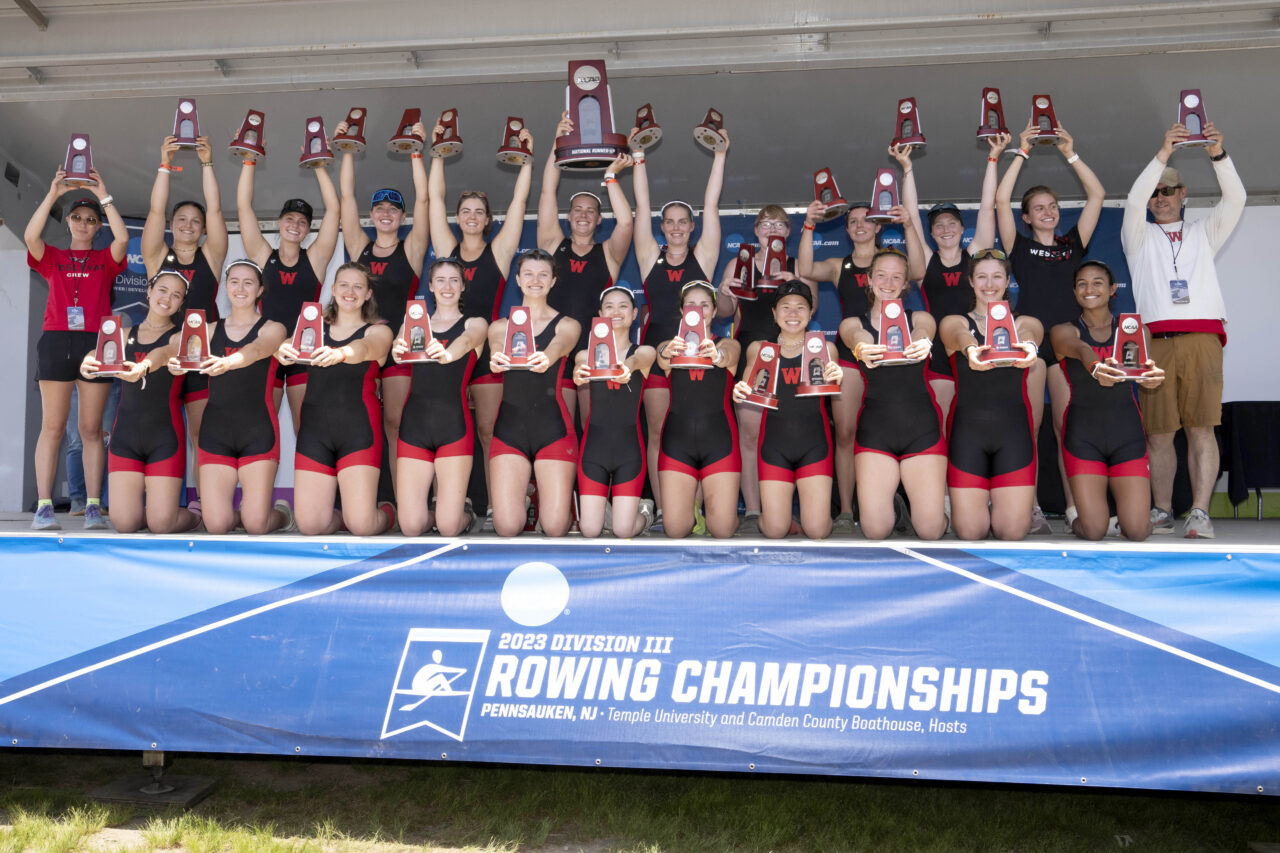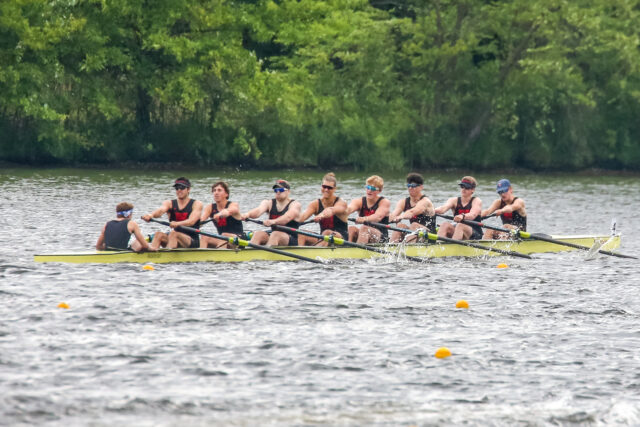After Record-Setting Performances, Men’s and Women’s Crew Row into a New Season

When Wesleyan’s crew teams journeyed to New Jersey at the end of last season, each found something a little different, meteorologically speaking. At Cooper River on Memorial Day weekend, the women’s squad rowed in near-ideal conditions and water still as glass. By the time the men’s team plunged oars into Mercer Lake a week later, an abundance of wind had replaced race-postponing heat.
Weather notwithstanding, both Wesleyan contingents finished the season in the same fashion: by racing a few thousand meters and landing in the record books. The men’s first varsity eight and second varsity eight teams each secured runner-up finishes at the IRA Division III National Championship, the program’s best showing at a national regatta since 1987. Meanwhile, the women’s runner-up finish in the varsity eight grand final at the NCAA Rowing Championships represented the team’s highest finish in program history.
Beyond the synchronicity and the superlatives, the Cardinals’ recent performances on the water indicate how far each team has come, how far men’s coach Phil Carney and women’s coach Pat Tynan aim to go, and the pace they plan to keep along the way. “Phil and I have talked about this for 14 years: we want a fast boathouse, not just a fast crew here or there,” Tynan said. “Both programs work closely together, so to see both squads going fast on all levels has been really exciting.”

This year, after falling short of qualifying for the inaugural Division III championship in 2022, the men’s team rebounded with one of its best single seasons. “Everyone on the team this year was positive, upbeat, and eager to contribute,” said Carney, recently named Division III National Coach of the Year by the Intercollegiate Rowing Coaches Association. “[The season] was one of the most enjoyable I’ve had in a 35-year career at Wesleyan.”
At Mercer Lake, Wesleyan was seeded number two behind Williams, a school they’d raced four times during the 2022-23 season. “We hoped we could essentially make it into a two-boat race,” Carney said. After a setback 500 meters in, the first varsity eight team held on during an ultra-close competition for runner-up: Wesleyan clocked 6:37.899 while Bates registered 6:37.971. A similar dynamic repeated in the second varsity eight grand final: trailing Williams, the Cardinals (6:47.926) beat Trinity (6:48.946) by a little more than a second.
“The guys did a great job of staying calm, handling a bit of misfortune, rebounding, and really staying steadfast until the end,” Carney said.
The women’s runner-up finish reflects an approach to practice built around incremental improvement. “Our team goal is daily growth in pursuit of a national championship,” Tynan said. “What that means, basically, is what can we do today? . . . How can we get the oar in the water a little more efficiently, or use our bodyweight a little more efficiently to propel the boat, or tinker with the training plan a little bit? That’s what I get excited about.”
While the women’s second varsity boat had been racing fast all season, Tynan said the first varsity eight had had a rockier path. At the NCAA championships, however, the first varsity eight qualified for the top spot in the preliminaries, then clocked 7:09.949 in the grand final—second behind Wellesley, and 2.742 seconds ahead of third-place Ithaca. Accounting for the second varsity eight’s fifth-place finish (7:21.189), Wesleyan’s combined team score of 45 points placed them second overall behind Wellesley, the two-time defending national varsity eight champion.
“As coaches, we often question decisions we make: is this the right series of workouts? Is the boat set up correctly?” Tynan said. “Being able to perform at a high level resets confidence for all involved, and it creates a pretty good springboard for this coming year.”
Before kicking things off with the Riverfront Regatta in Hartford on October 2, the Head of the Charles in Boston on October 23, and the Head of the Fish in Saratoga Springs, New York, on October 29, the men’s and women’s crew teams will both be honored for their achievements on the field when the Cardinals football team faces Hamilton on September 30. And with both teams placing as runners up in national championships, Wesleyan can unofficially lay claim to the fastest boathouse in the country—an auspicious qualification as a new season gets underway and a new roster finds its rhythm.
“They have a higher standard because they know they can compete at this national level now,” Carney said. “[A championship] won’t be an expectation, but it’s definitely a goal. And there’s only one way to go up from where we finished last time.”

